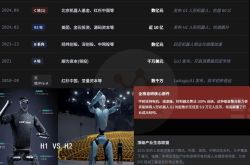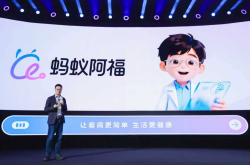Robots Accelerate 'Factory Operations' as Global Market Sees 'Eastern Powerhouse' Rise
![]() 09/17 2025
09/17 2025
![]() 676
676
The agile movements of robots on stage and their 'competitive duels' on the field have become a platform for showcasing their prowess. Now, these intelligent machines are quietly making their way into factory workshops, playing increasingly pivotal roles on production lines, inspection corridors, and hazardous operation zones.
At the 2025 Global Industrial Internet Conference, a series of robot demonstrations left audiences in awe. Among them were the 'Songyi' wheeled humanoid robot, capable of autonomous material handling; a dual-arm humanoid robot, demonstrating seamless brain-eye-hand coordination in water-pouring tasks; and an intelligent robot, autonomously conducting power room inspections.
These robots are no longer mere executors of programmed instructions but autonomous decision-makers equipped with 'embodied intelligence.' They are transitioning from performance stages to practical industrial applications, showcasing immense potential in diversified robotics fields.
From Industry to Services: Robots Empowering Across Sectors
Today, robot applications have expanded beyond traditional industrial manufacturing to encompass a wide range of industries. Based on their application domains, robots can be primarily categorized into industrial robots, service robots, and specialized robots.
Industrial robots are designed for structured environments, performing manufacturing tasks such as material handling, palletizing, welding, spraying, assembly, laser processing, and more. They are widely utilized in the automotive, electronics, and metalworking industries.
In China, industrial robots find their primary applications in the 3C electronics and automotive sectors, accounting for 33% and 23% of total applications, respectively, in 2021. Leading companies in the industrial robot arena include UBTECH, Estun, SIASUN, and Horizon Robotics.
Service robots, on the other hand, are tailored to provide specific services to humans in unstructured environments. They cover a broad spectrum, including home services, medical rehabilitation, and public services (such as agriculture, finance, logistics, and education), with a high demand for human-robot interaction.
According to OFweek Robotics, China produced a staggering 9.214 million service robots in 2021, marking a 48.9% year-on-year increase. Representative service robot companies include Dreame, Roborock, Shoucheng Holdings, Ecovacs, and TINAVI.
Specialized robots are engineered to replace humans in hazardous environments or under special working conditions. Their applications span military operations, extreme tasks, space exploration, deep-sea detection, and emergency rescue, requiring high reliability and environmental adaptability.
Meanwhile, the robotics technology landscape is thriving, with multiple technical routes developing in tandem. In September, Zhang Zhi, Director of the Intelligent Systems Institute at Harbin Institute of Technology, unveiled a novel approach—deeply integrating symbolic and connectionist intelligence to construct a rule chain. This innovation forms technological advantages in environmental perception, decision-making, planning, and motion control.
In the same month, ByteDance's Seed team introduced Robix, a robotic brain that adopts a hierarchical robot system architecture. This design decouples the 'brain' and 'cerebellum,' enabling 'macro thinking, micro execution.' Such an architecture allows robots to interact flexibly with the environment and humans at a high level while ensuring precise execution at a low level.
Nevertheless, 'embodied intelligence' remains the focal point of research and development. The goal is to enable robots to interact with the environment in real-time through their physical entities, achieving seamless integration of perception, cognition, decision-making, and action.
Overall, the robotics industry has evolved into a parallel development landscape across industrial, service, and specialized applications. Driven by innovations like embodied intelligence and multi-technology integration, it is exhibiting unprecedented diversity and vitality.
New Top Three Emerges, Pursuing Excellence in Niche Segments
Within this thriving ecosystem, UBTECH, Shoucheng Holdings, and Horizon Robotics have emerged as the new top three, showcasing outstanding performances in their respective niche segments. They represent the cutting-edge levels of industrial applications and service implementations, collectively outlining an innovative blueprint for China's diversified robotics industry development.
Among them, UBTECH was featured in Morgan Stanley's research report, 'Humanoid Robot 100: Mapping the Humanoid Robot Industry Chain Value,' released in February this year.
Data reveals that over the past five years, UBTECH has filed 59 humanoid robot patents in the United States, ranking second globally, just behind Boston Dynamics and far surpassing international giants like Sony (48) and Google (39).
As of the end of June 2024, UBTECH holds over 2,450 patents, including over 450 overseas patents, with nearly 60% being invention patents. It ranks first globally in terms of the number of effective humanoid robot patents.
UBTECH's leadership in technological prowess is undeniable. Additionally, as the earliest domestic company to deploy humanoid robots, UBTECH has forged partnerships with BYD, Dongfeng Liuzhou Motor, Geely, and others. Its Walker S series has become the world's most widely trained industrial humanoid robot in automotive factories.
Since launching its first automotive-grade chip, 'Journey 2,' in 2019, Horizon Robotics officially entered the advanced driver-assistance systems (ADAS) sector. Between 2021 and 2023, its high-computing-power chip, 'Journey 5,' supported urban NOA functions, with cumulative shipments exceeding 5 million units.
According to Gaogong Intelligent Automobile, Horizon Robotics claimed the top spot in the Chinese market for autonomous brand passenger car front-view integrated machine (L2 ADAS) computing solution market share in the first half of 2024, with a 33.73% share.
Furthermore, according to Zous Auto Research, Horizon Robotics ranked fourth in the Chinese passenger car L2+ and above chip supplier market from January to August 2024, with a 14.7% share and 233,000 units installed, primarily in brands like Li Auto and Fangchengbao, with models including Li L6/7/8/9, Bao 5, and Song L.
Shoucheng Holdings has undergone a remarkable transformation from a traditional sector player to a diversified layout leader. Initially focused on steel-related businesses, it shifted its focus to its parking asset management brand, 'E-Parking,' and continued to deepen its presence in the 'parking + charging' sector, forming a nationwide intelligent charging pile network.
In the robotics industry layout, Shoucheng Holdings is transitioning into a full-chain robot service platform enterprise through increased investment and business expansion. In September this year, it boldly opened 20 robot 4S stores.
These innovative breakthroughs indicate that China's robotics industry has shifted from technological followership to partial leadership. UBTECH's global patent leadership in industrial humanoid robots, Horizon Robotics' market share advantage in autonomous driving chips, and Shoucheng Holdings' innovation in service robot commercialization models collectively form unique advantages for Chinese companies in global robotics competition.
The rise of these companies not only reflects the overall improvement of China's technological strength but also signifies that in the global robotics technology competition, China is transitioning from a participant to a rule-maker.
Global Market Accelerates, Chinese Technology at the Core
As these companies establish competitive advantages in niche segments, China's robotics industry continues to strengthen its global market influence.
Data from the International Federation of Robotics shows that global robot sales surged from $34.3 billion in 2020 to $66 billion in 2024, with a compound annual growth rate (CAGR) of 17.8%.
China's market performance has been particularly outstanding. Its market size expanded from $17.4 billion in 2020 to $47 billion in 2024, with a CAGR of 14.3%. China remains the world's largest industrial robot market, with sales reaching 297,000 units in 2022, accounting for 53.7% of global sales.
Moreover, China's advantages in the robotics industry chain extend beyond manufacturing to encompass a gradually improving technological ecosystem and innovation capabilities. From core components (such as servo motors, reducers, controllers) to complete machine design and integration, and then to software systems and AI algorithms, Chinese companies are achieving breakthroughs in multiple areas.
According to Morgan Stanley's research report, 73% of participating companies in the current global humanoid robot industry chain are located in Asia, with 56% from China.
This trend not only reflects the acceleration of China's manufacturing intelligent transformation but also highlights its rising core position in the global technology competition landscape.
Manufacturing robot density, a key indicator for measuring automation levels, reached 392 robots per 10,000 workers in China in 2022. Previously, in 2021, the density was 322 robots per 10,000 workers, ranking fifth globally and surpassing the United States for the first time. This figure further increased to 470 robots per 10,000 workers in 2025, far exceeding the global average.
Furthermore, among various niche segments in the robotics industry, humanoid robots have become a focal point due to their high biomimicry and broad application prospects.
Currently, robots are widely used in automotive manufacturing, electronics assembly, logistics and warehousing, medical rehabilitation, home services, and other fields, becoming a crucial engine driving global industrial upgrading and high-quality economic development.
It is estimated that China's humanoid robot market size will reach RMB 12 billion by 2030 and exceed RMB 6 trillion by 2050, with a CAGR exceeding 30%. This growth is primarily driven by two core trends: accelerated popularization due to cost reductions and significant demand released by expanded application scenarios.
Morgan Stanley's research report also points out that with supply chain maturity and scaled production, the average selling price (ASP) of humanoid robots will decline by 8% annually, with core bill of materials (BOM) costs decreasing by 11%. Cost reductions will significantly accelerate the popularization of humanoid robots, enabling their entry into more scenarios like homes, healthcare, and education.
For Chinese technology, 2025 is destined to be an extraordinary year. First, the domestic AI large model DeepSeek R1 achieved impressive information processing results at a training cost far lower than comparable models. The generalization process of Chinese humanoid robots also benefits from technological breakthroughs in domestic AI large models, maintaining a leading position in the global market. An era entirely belonging to Chinese technology has begun.
Source: HK Stock Research Society






